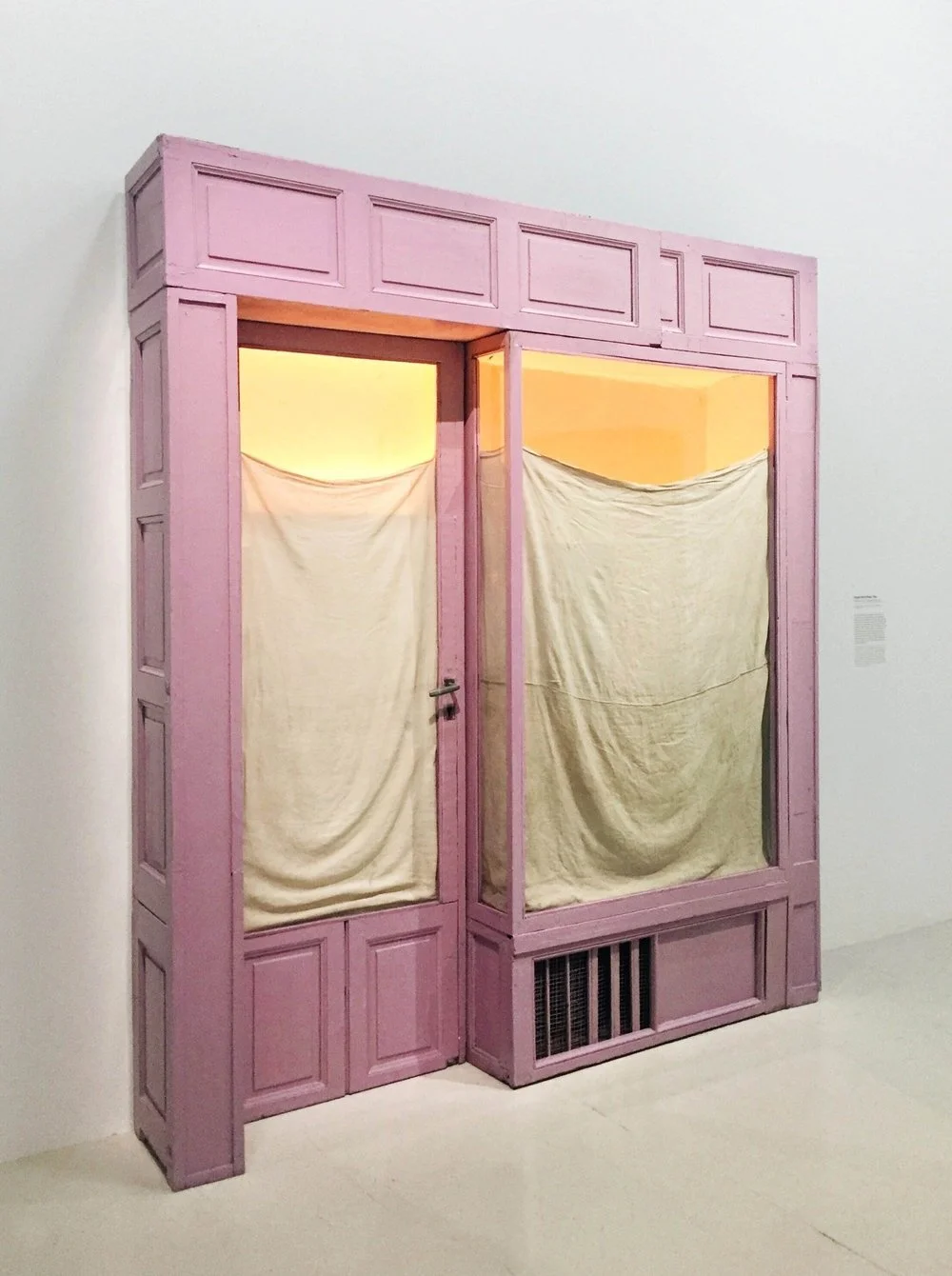Exhibition Review: Sarah Sze at Fondation Cartier
Fondation Cartier is the first museum I have visited since the nation-wide closings of cultural institutions required by the global pandemic almost a year ago. Health and safety protocols still require advance reservations and a mask at all times, but there is no time limit for your visit once inside. As a student, my ticket was free, though the general admission price is 11 euros.
Night into Day
The featured exhibition was a display of two installations by Sarah Sze, a renowned contemporary multimedia artist known for her immersive installations made of everyday objects. This show, titled De nuit en jour [Night into Day], was no different, incorporating various quotidian articles into complex constructions that were the focal point of the entire first floor of the building. The installations are both new works and a continuation of her Timekeeper series, a multiple-year exploration of virtual and material images and their exponentially increasing overlap in our era.
Twice Twilight is a massive installation inspired by planetariums. The structure resembles an amphitheater, and just as the aforementioned scientific model, the artwork is an exploration of celestial imagery, incorporating light and projections to create a mesmerizing yet contemplative experience.
Video projections display images that rotate around the walls of the gallery, placing viewers themselves within the cosmos, tracing the earth’s rotation. The structure itself can be considered a form of optical illusion: It is made with dense construction materials, but clever assembly and lighting make it appear as though a sphere of energy is floating at the center of the work.
The play on mirage, gravity, and movement is meant to highlight the inherent complexities of measuring time and space; the subtly changing abstract images on ripped pieces of papers reflect the ambiguity of human memory.
Sze wants viewers to witness her creative process, which she makes visible with preliminary sketches, electrical wires and mini prototypes of the sculpture’s design transparently placed in and around the installation. The apparatus projecting drifting wall imagery is also bluntly placed on a construction table, with no effort to conceal the projections’ source. The artist’s hand is not meant to be invisible, rather Twice Twilight engages with materiality in a way that reveals a concerted effort to understand the mysteries of our world.
Tracing Fallen Sky is a grounded work (literally, as it lies on the floor in the corner of the gallery) that uses mechanized movement and ephemeral materials to generate existential tension. This installation is also inspired by a traditional scientific model: the pendulum. A suspended metal pin oscillates above the installation, grazing over a pile of salt at its center, but never actually making contact. A configuration of mirrored stainless steel is fashioned to represent a repressed landscape, surrounded by a blanket of salt—the visual effect simultaneously resembling land emerging from snowfall and a concave reflection of a body of water. Projections appear and disappear, once again emphasizing the transient nature of life.
The gallery floor is visible through spots within the salt circle, casting the same exact silhouette as the adjacent metal landscape, as if the entity had gradually shifted over the course of eras. Around the perimeter of the installation lie images printed on ripped pieces of paper, along with everyday materials and found objects. The juxtaposition of object and image is meant to confront viewers with contemplations of physical versus optical.
As the Foundation Cartier is a transparent glass building, both works change throughout the day, with effects in visibility, lighting, and perspective transforming depending on the hour or the weather. This adds a spontaneity that makes each moment of these works’ existence essentially singular, inimitable moments.
“As an artist, I think about the effort, desire, and continual longing we've had over the years to make meaning of the world around us through materials. And to try and locate a kind of wonder, but also a kind of futility that lies in that very fragile pursuit.”
- Sarah Sze
Exhibition dates: October 24, 2020 to May 30, 2021













